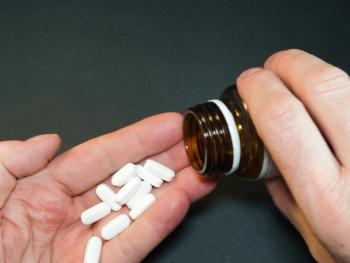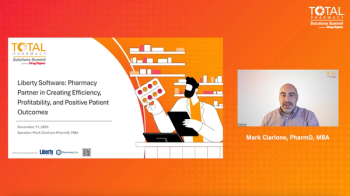
- Vol. 162 No. 04
- Volume 126
- Issue 04
How to Get Paid for Pharmacy Services
Pharmacists are finding ways to get reimbursed for clinical services. See what you can do to get paid.
Pharmacists in almost every setting are pushing for provider status. While provider status is the most direct and transparent way to get paid for clinical services, it’s not the only way. Pharmacists who learned how to navigate the reimbursement system have been getting paid for clinical services for years.
“We started our first pharmacist-managed ambulatory care clinic in 1996 and have been getting paid for our services from day one,” says Dean T. Parry, RPh, assistant vice president for clinical informatics at
Related article:
Like many other integrated networks, Geisinger covers only about 40% of members through its own insurance program. The remaining 60% are covered by standard commercial payers. The key to convincing commercial payers to reimburse clinical pharmacy services is to provide a reasonable return on the payer’s investment, says Parry.
ROI: The Key to Reimbursment
Payers have seen all the data on the health and financial outcomes of clinical services. Parry says that they know just as well as pharmacists that the appropriate pharmacy interventions can improve health outcomes and reduce overall costs of care-over time.
“Payoff time is the obstacle for payers,” he explains. “They need to see a payoff in reduced total cost of care in less than one year. That might be possible in some disease states, but the return on investment for anticoagulation, asthma, COPD, cardiovascular disease, and most chronic diseases is too long term for most payers to work with.”
The current wave of consolidation among payers,
Integrated networks like Geisinger seldom worry about whether their pharmacists can bill payers directly, Parry said. Clinical pharmacists are part of the overall patient care team working to control costs, reduce admissions, improve adherence and provide more effective care. When pharmacists are part of the patient care team, the health system looks to the total cost of care versus the total reimbursement for care. Whether services are reimbursed directly or through some other provider becomes an accounting exercise for the integrated health network. The key to convincing commercial payers to reimburse clinical pharmacy services is to provide a reasonable return.
Related article:
For now, closed systems like Kaiser, where a network is exposed to patients’ entire cost of care over multiple years, have an easier time justifying the financial investment in clinical pharmacy services. Pharmacists in other settings must find an appropriate work-around. Closed system pharmacists don't get reimbursed individually because the system is responsible for everything: insurance coverage, cost of care, quality of care, patient and provider satisfaction. If a third party payer is involved-Medicare, Medicaid, or some other public system-the system gets reimbursed, not the provider.
Up next: Collaborative agreements and how to get started
Collaborative Agreements
A work-around usually means teaming up with another provider who has the necessary reimbursement status, most often a physician or nurse practitioner. Many states have collaborative practice agreements that make it relatively straightforward for pharmacists to provide clinical services under protocol with another provider and bill for services through that provider. The billing provider shares reimbursement under terms agreed to by both provider and pharmacist. If pharmacy is part of an SSP, reimbursement is simply part of health plan revenues that go to pay all providers.
Geisinger started with a single pharmacist, Parry, and a collaborative practice agreement with a single neurologist to handle anticoagulation. Today, Geisinger pharmacists are covered by a network of overlapping collaborative agreements with multiple providers to ensure that clinical pharmacy services are eligible for reimbursement.
These agreements may not be the ideal reimbursement solution, but it’s a workaround that can work for an entire career.
Related article:
“I’ve been prescribing and adjusting drug therapy almost since the day I got out of pharmacy school,” says pharmacy consultant Fred Pane, RPh, former hospital pharmacy director. “Granted, I worked mostly in hospital pharmacy, but there is always a way to work around not having provider status. You do it by solving clinical problems for providers who do have the right reimbursement status. When you become an indispensable member of the patient care team, there are always ways to get paid for your services,” says Pane.
How to Get Started
The key to building collaborative practice and reimbursement is creating a concrete plan that solves provider pain points, says Parry.
The first step is to evaluate published outcomes and cost data against your own practice and project returns locally. Once the program has local buy-in, pharmacy creates standardized work flows for interventions, data collection, and data reporting on patient and financial outcomes. Standardized clinical procedures and data collection makes it easier to document both interventions and outcomes.
“One of our programs worked with difficult-to-manage diabetes patients with elevated hemoglobin A1c levels,” Parry says. “Clinical pharmacists brought more than half of them to A1c goal in less than one year. That kind of data sells itself.”
Articles in this issue
over 7 years ago
How Pharmacists Can Help Frail Patientsover 7 years ago
Explaining the Flawed DIR System to Student Pharmacistsover 7 years ago
Everything Pharmacists Need to Know About DIR Reformover 7 years ago
The Future of Pharmacy Is Not All Doom and Gloomalmost 8 years ago
Apalutimide for Prostate Cancer: What to Knowalmost 8 years ago
Pediatric Patients Present Unique Challenges to PharmacistsNewsletter
Pharmacy practice is always changing. Stay ahead of the curve with the Drug Topics newsletter and get the latest drug information, industry trends, and patient care tips.











































































































































































































